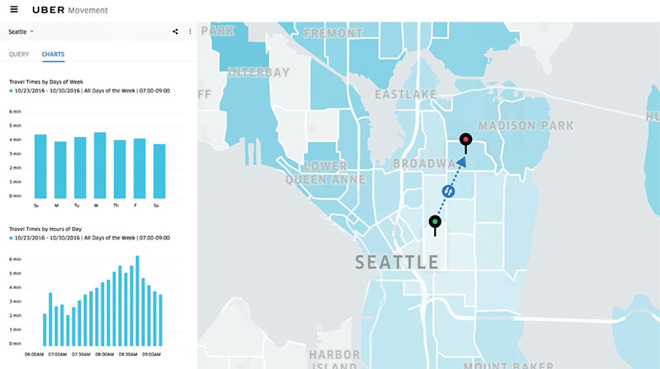Uber is giving urban planners and researchers the ability to look into some of the data generated by its ridesharing app, allowing cities to monitor and improve upon existing infrastructure.

Called Uber Movement, the website offers data sourced from Uber trips in more than 450 cities. Planners using the tool will be able to search for average trip times between two points for specific times of day, days of the week, and months, information that could help cities improve traffic flow.
Instead of providing raw data, Uber Movement aggregates and anonymizes car ride information into geographic zones, similar to those used by transportation planners for analyzing infrastructure. By grouping similar trips together, the site provides general trends for routes, without advising of a specific user's route, destination, or departure point.
The promise of anonymized rider data may not do much to assuage user concerns over privacy. In 2015, Uber updated its privacy policy to allow for users to be tracked in the background, including up to five minutes after the trip ends, though there is the option to opt out in the app.
So far, Uber has provided officials in Washington DC and Sydney, Australia with access to the service prior to a wider launch. Washington DC Mayor Muriel Bowser enthused about the service, "we want to employ as many data sources as possible to mitigate traffic congestion, improve infrastructure, and make our streets safer."
One example of how the data could be used is analysis of the Washington DC Metrorail system suspension, in March last year. Maps compiled by Uber show how the travel times increased significantly for certain areas during a service interruption compared to the average, noting a band of increased travel times coinciding with entry points of major highways.
"City planners face a myriad of challenges, and we hope to help tackle more of them over time," said Uber head of transportation policy Jordan Gilbertson. "We're excited to partner with city officials, urban planners and research organizations to continue building features that today's transportation planners need."
Uber aims to start providing access to Movement to planning agencies and researchers in the coming weeks, though it will also be made available to the public in the coming months.


